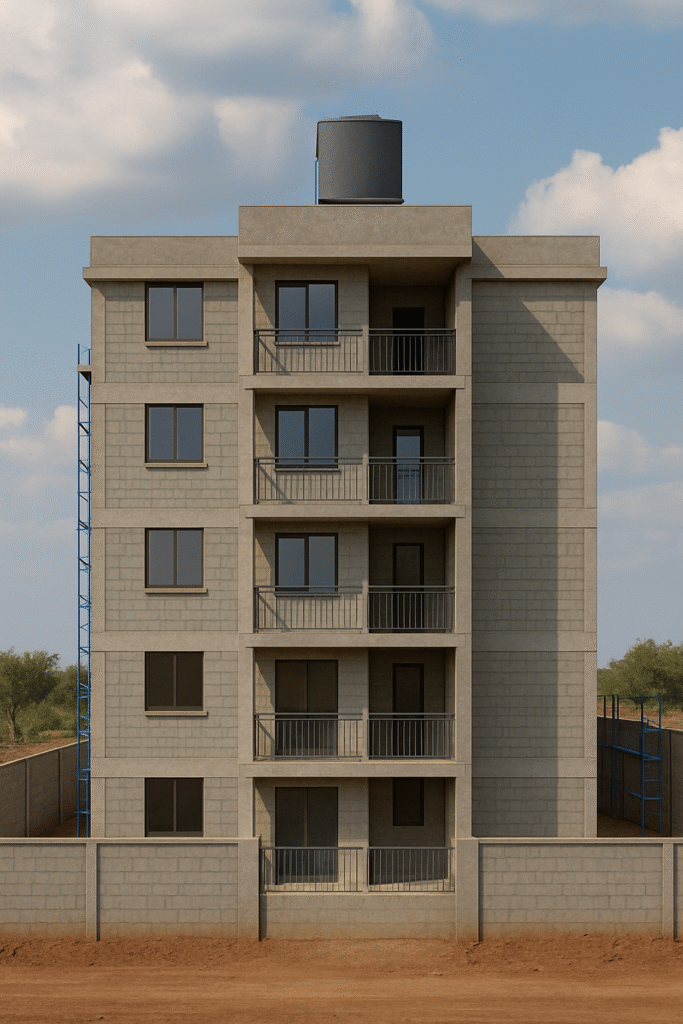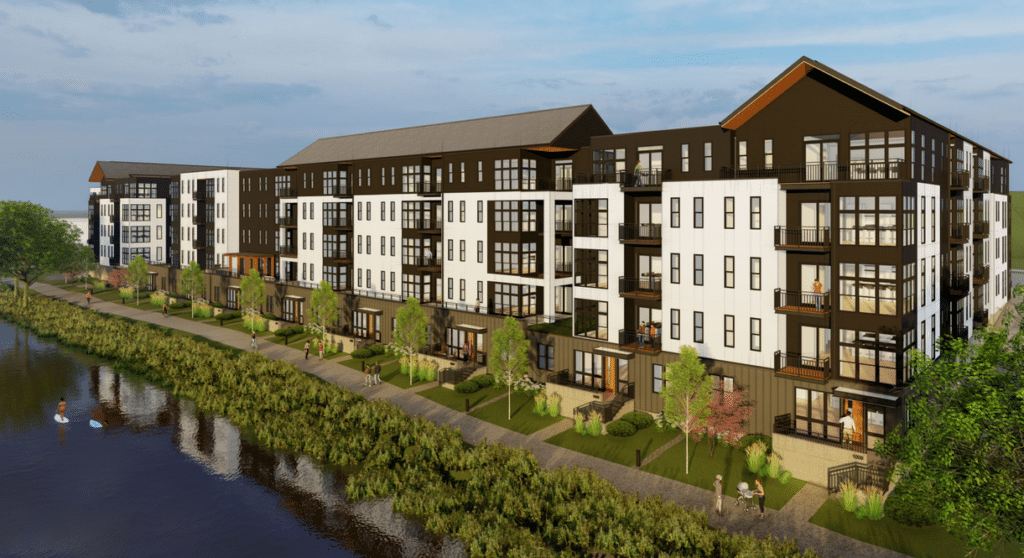Discover the true ROI of bedsitters in Nairobi — including the 2025 cost of building, rental income potential, yield calculations by neighbourhood, and practical tactics to increase profits.
Introduction
ROI of Bedsitters in Nairobi
The ROI of bedsitters in Nairobi is an important question for investors looking for affordable entry into the property market. Bedsitters combine low build cost with steady rental demand, making them attractive for cash-flow-focused portfolios. This article gives a practical, transactional guide: costs to build, rental income scenarios, ROI formulas, risk management, financing, and actionable tactics to maximise returns. Read on to decide if a bedsitter investment in Nairobi aligns with your goals.
What Is a Bedsitter and Why It Matters for ROI
Definition & typical layout
A bedsitter is a single self-contained living unit where sleeping, cooking, and living happen in one compact space, usually with a kitchenette and private bathroom. In Nairobi these units often measure between 20 and 35 square metres and are built to serve students, young professionals, and single tenants.
Bedsitter vs studio vs one-bedroom
Bedsitters differ from studios and one-bedroom flats by size and separation of spaces; studios may be slightly larger and one-bedrooms have a separate bedroom. This difference affects rental ceilings, tenant type, and expected turnover, which in turn influences ROI calculations for investors.

Nairobi Bedsitter Market Snapshot
Sale prices & capital values
Nairobi’s bedsitter prices vary widely with location and finishing; central nodes and well-serviced suburbs command higher capital values. Investors should benchmark local sale prices when calculating acquisition cost versus build-to-let strategies.
Rental rates per area
Rents for bedsitters in Nairobi range from lower amounts in outer suburbs to higher rates in Kilimani and Westlands, reflecting proximity to jobs, universities, and transport. Use local listings to populate realistic rent assumptions for each neighbourhood when modelling ROI.
Vacancy, tenant churn & demand trends
Vacancy and tenant turnover affect effective rental income; high-demand nodes near universities show lower vacancy but higher tenant churn when student terms end. Consider seasonal demand and tenancy length when estimating annual occupancy for ROI calculations.

How to Calculate ROI for Bedsitters in Nairobi
Key metrics: gross yield, net yield, cash-on-cash, cap rate
Gross yield is calculated as annual rent divided by total investment and gives a quick profitability snapshot, while net yield factors in operational expenses and taxes. Cash-on-cash return measures the actual return on investor cash invested and is useful when loans are involved.
Adjustments: depreciation, vacancy allowance, maintenance
A realistic ROI model subtracts vacancy allowances, maintenance, management fees, and periodic upgrades from gross income; depreciation and tax adjustments further refine net return. Always stress-test models with 70–95% occupancy scenarios to understand sensitivity.
Worked example: 30 m² bedsitter in two neighbourhoods
For a KSh 1.5M build cost and KSh 12,000 monthly rent, gross yield is (144,000 ÷ 1,500,000) × 100 = 9.6%. After KSh 24,000 annual maintenance and a 10% vacancy allowance, net ROI falls to roughly 7–8%, showing the importance of realistic expense assumptions.
Cost of Building Bedsitters in Kenya
Benchmarks: cost per m² in Nairobi region
Construction costs in Nairobi typically vary by finish level, contractor, and site conditions; use a per m² range to estimate unit costs. For planning, take mid-range per m² numbers and multiply by the expected unit area to produce conservative budgets.
Sample BOQ / cost breakdown
A practical bill of quantities lists foundations, blockwork, roofing, finishes, plumbing, electricals, and external works; these line items together define the true cost to deliver a habitable bedsitter. Including contingencies of 7–12% helps absorb price fluctuations in materials or labour during construction.
Cost drivers and cost-saving techniques
Key cost drivers include land topography, foundation depth, imported finishes, and regulatory levies; cost savings come from modular design, bulk procurement, and building multiple units simultaneously to capture economies of scale. Choose durable but affordable finishes that reduce maintenance and keep tenant appeal high.

Bedsitter Rental Income in Nairobi
High, mid, low rent scenarios
Rents differ by location and finish: premium nodes command the highest monthly rates while peripheral areas provide lower but stable rents. Model high, medium, and low-case rent scenarios to see how ROI changes and to set realistic investor expectations.
Occupancy rate assumptions & sensitivity
Occupancy assumptions drive annual income; a unit at 95% occupancy looks significantly more attractive than one at 70%. When modelling returns, include realistic marketing time, tenant screening lead-time, and periodic vacancies to avoid over optimistic yield estimates.
Short-term vs long-term letting and extra income streams
Short-term platforms can yield higher nightly rates but come with more management costs and variable occupancy, whereas long-term leases provide stability. Additional revenue from services like laundry, wifi, or paid parking can meaningfully improve cash flow and overall ROI.
Calculating ROI Across Neighbourhoods
Nairobi CBD and high-demand nodes
High-demand nodes near business districts and universities typically enjoy stronger rent levels and faster tenancy uptake, boosting yields in many cases despite higher land or build costs. Factor in premium pricing for convenience and transport when forecasting income for these areas.
Middle-income suburbs
Middle-income suburbs balance lower acquisition or build costs with solid rental demand from middle-income wage earners. These areas often deliver steady occupancy and predictable maintenance profiles, which can stabilise net ROI over time.
Peripheral and growth-edge areas
Peripheral zones may offer the lowest construction costs but risk slower capital growth and longer vacancy periods; however, long-term infrastructure projects can quickly change area dynamics. Use planned infrastructure and employment growth data to gauge future rental demand and appreciation potential.

Risk Factors & Mitigation
Tenant default, turnover, and wear & tear
Frequent tenant turnover increases cleaning, minor repairs, and marketing expenses; robust tenant screening and deposit policies reduce default risk. Regular preventative maintenance lowers long-term repair bills and helps retain tenants for longer tenancies.
Regulatory, permits, and zoning risks
Failure to secure proper planning approvals and building permits can lead to fines or demolition; always work with licensed professionals and submit plans for county approval. Familiarity with zoning and building standards also avoids costly redesigns during construction.
Cost overruns, inflation, and market shifts
Construction cost inflation, unexpected site conditions, and changes in renter preferences can erode returns; include contingency budgets and index rents where possible. Diversify location exposure across a few neighbourhoods to reduce single-market risk and give flexibility to redeploy capital.
Strategies to Maximise Bedsitter ROI
Value-adding finishes and amenities
Invest in small, targeted upgrades—durable flooring, efficient fixtures, and a quality kitchenette—that attract higher-paying tenants without large cost increases. Installing solar water heaters or reliable security features often allows owners to charge a rent premium and lower operating bills.
Operational efficiencies and digital management
Implement online rent collection, automated invoicing, and digital tenant screening to reduce management time and missed payments. Partnering with local property managers or platforms can cut vacancy duration and free the owner to scale.
Phased development, reinvestment, and service bundling
Start with a few units, prove cash flow, and then reinvest profits into more units to scale risk-adjusted returns; bundling services such as internet or laundry for an added fee increases revenue per tenant. Use a phased approach to keep debt manageable and to learn operationally before scaling.

Financing, Taxes & Compliance
Mortgage and construction loan options
Kenyan banks and SACCOs provide construction loans and mortgages tailored for rental developments; typical equity requirements range from 10–30% depending on lender risk appetite. Compare loan terms, grace periods, and amortisation schedules to choose financing that preserves positive cash flow.
Tax obligations and incentives
Rental income is taxable and must be declared to KRA; understand allowable deductions like maintenance and loan interest to compute taxable income correctly. Investigate any local incentives for affordable housing projects which can improve returns through tax breaks or subsidised inputs.
Permits, approvals, and post-construction registration
Obtain architectural approvals, building permits, and compliance certificates before letting units; ensure connections to water, sewer, and electricity are legally compliant. Proper registration protects the investment and simplifies selling or refinancing later.
Conclusion
The ROI of bedsitters in Nairobi remains viable for investors who model realistically and manage carefully. With reasonable construction budgets, accurate rent and occupancy assumptions, and sensible risk mitigation, bedsitters can deliver steady annual returns and scale through phased development. Before investing, run sensitivity analyses using conservative vacancy and maintenance assumptions, secure approvals, and pick neighbourhoods with consistent demand to maximise your chance of success. The primary keyword — ROI of bedsitters in Nairobi — should be central to your evaluation as you compare alternatives and build your investment plan.